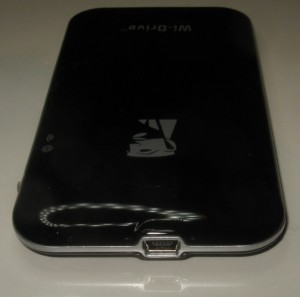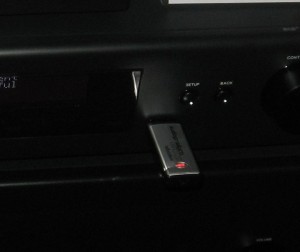The current situation
USB storage device types
Single-volume USB devices
Most USB memory keys and similar devices do present themselves to your computer as a single volume or “logical disk”. In Windows, this would be represented as one drive letter and volume name for the device and a Macintosh would show up one extra drive icon on the Desktop when you plug the device in. These devices do work well with specific-function USB host devices like printers or audio/video equipment.
Multiple-volume USB devices
But there are devices out there that don’t present themselves as a single logical volume. These can range from a memory key or external hard disk that has been formatted as two logical volumes to USB memory-card drives that have multiple slots for the different card types and devices that have fixed storage and a memory-card drive. It can also include mobile phones and MP3 players that have internal storage but also have a microSD card slot.
The former situation is best represented by the Kingston Wi-Drive which I just reviewed here. It presented itself as two logical volumes – one being a read-only volume for the Wi-Fi access point user interface and another for users to store their data at.
How different hosts handle multiple-volume USB devices
Regular computers
This class of device would show up as two or more different drive letters and volume names in Windows or show up as two or more drive icons on the Macintosh desktop. You may have to make sure each volume is safely dismounted in the operating system before you disconnect the device from the computer.
Specific-purpose devices
But an increasing number of specific-purpose devices are being equipped with USB ports for connecting USB storage devices to. This typically allows you to print documents or photos held on the USB storage device or play / show audio-video content through the screen and/or speakers attached to or integrated in the host device. Infact this setup is used in cars as a preferred alternative to the multi-disc CD stackers that used to exist in the boot (trunk) or dash.
Some devices even write to the USB storage device, typically to store configurations, recorded audio / video content or locally-cached BD-Live online data.
The main problem with these USB storage devices that present themselves as multiple logical volumes is that most of the specific-purpose devices cannot successfully mount the multiple-logical-volume devices at all.
Typically, they would give up the ghost at such attempts, as I noticed with the Kogan WiFi Digital Radio when I tried to connect the Kingston Wi-Drive which had some music on it to the radio. As well, the host-device manufacturers stipulate that you cannot try to use such storage devices with their devices. One person I talked to tonight mentioned that he had to be careful about how he formatted the USB memory key he used for storing music to play in his car’s stereo system.
What can be done
The idea of mounting multiple volumes of the common file systems could be investigated with these dedicated-purpose devices. Here, it could allow the volumes in the device to be presented as multiple “disks” if multiple suitable volumes exist. They could then be listed using a generic “USB+number” name for unlabelled volumes and the volume name for labelled volumes. Most applications would need to mount and use one volume at a time whereas some applications may allow for concurrent multiple-volume access.
The volume-selection option could be provided as part of selecting the files or folders to work with or, in the case of audio-video applications, the USB port used by the multi-volume storage device could be “split” as extra logical sources for each eligible volume.
Conclusion
This may require a small amount of extra code so that different volumes at a physical interface can be enumerated and made available but the idea of supporting multi-volume USB storage devices by dedicated-purpose host devices could be worth investigating.




